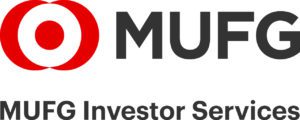Sponsored by MUFG Investor Services
GC: MUFG as a whole obviously has various points of contact with clients on ESG-related matters, but from an investor services perspective, is there anything in particular that would come under your domain?
John Sergides: Yes. People are looking to us as an independent provider of services to managers and investors. Can we, for example, provide a credible scoring framework, considering all the ESG data sources out there and selecting the best potential ones. This is not a fixed goal post, it’s not something you do once, and you’re done with it. You have to continuously track these things.
You also have to be ready to act as a single point of contact for your clients with all these vendors. Individual managers may not have the scale or capability to contract these data providers directly. Our ability to assess multiple data sources and bring them together is critical.
GC: Does ESG fit naturally into the performance data you have traditionally provided?
JS: People have historically looked at investment drivers as either, on one hand, doing ‘good’ and on the other hand, doing ‘well’. For the longest period of time these were seen as almost mutually exclusive. However, when you look at the data, some of the portfolios which, during the pandemic, have been the best performing, have been ESG-focused portfolios.
The more we can provide this data in a very transparent way that people can use, allowing investors to break it down into the individual pillars of E, S and G and focus on what is important to them, the better. And this is not something that can be undertaken lightly. I don’t think we will see a myriad of potential providers. This is an area where you have to pick your partners carefully. Your credibility as an organisation, as an investor, as a manager is at stake here.
There is at present no one complete set of ESG standards. This will change, but there is no golden rule book you can follow. Our job is therefore to collect, compile and normalise data across the three ESG pillars, then work with the manager who will decide how to best combine it.
We need to be able to demonstrate the transparency with which we collect this data and how meaningful it is. If you look at studies from a returns perspective, for example, the S in ESG has been shown to have the strongest alpha signal, followed by G and then by E. The investors may not necessarily see it that way; they may see the governance and the environmental aspects being more important, for example. Our job is to collect the data and be able to
transparently present this to the manager. How they apply it to the investor’s priorities is the manager’s job. I expect all portfolios will, at some point in time, have an ESG score attached to them.
GC: How easy is it to provide the necessary transparency in the absence of global standards?
JS: We have data available from ESG data vendors as far as the more liquid assets are concerned and have therefore developed standardised ESG Transparency Reports. The real challenge is when you are looking to the more illiquid space, such as private equity, where it’s much harder to get data. The liquid portfolios are clearly the easiest, but the shift into more illiquid assets across the spectrum means that we always have to focus on how to collect, normalise and present this data in a meaningful way.
We are fortunate in that we have an amazing book of clients who work with us. This is not something one tackles alone. We have working groups with some of the top tier managers out there, because we are all facing the same issue. From their perspective, working with a partner such as us providing standardised data, allows for comparison of investments on a like-for-like basis. The data itself within the three ESG pillars cannot be subjective on a client by client basis.